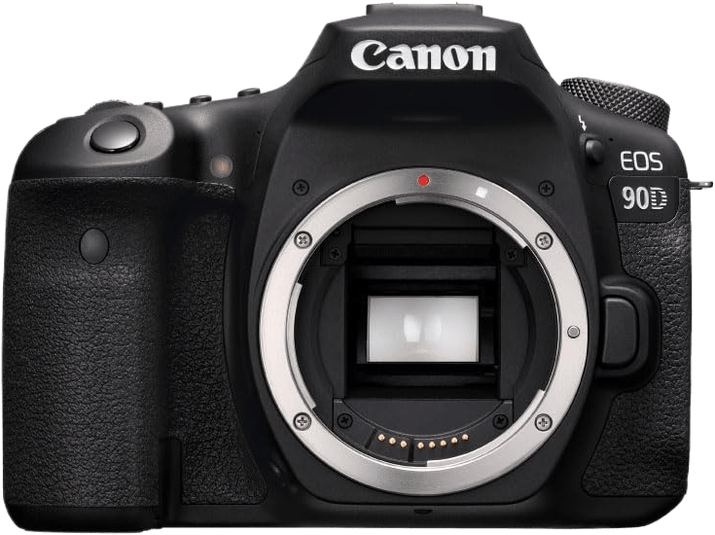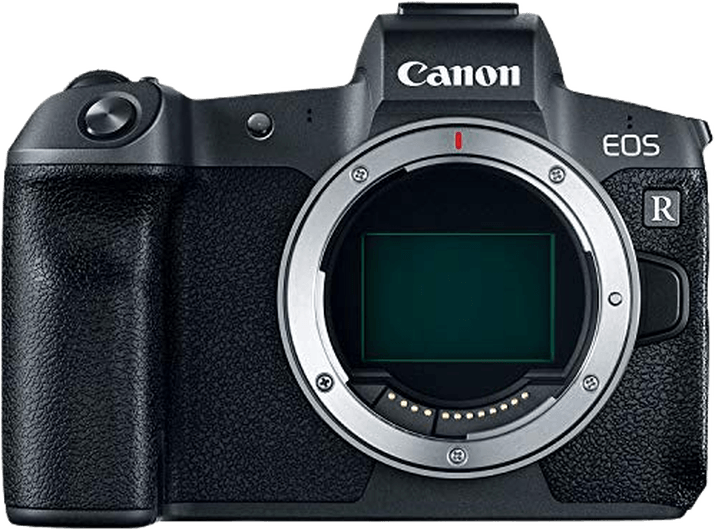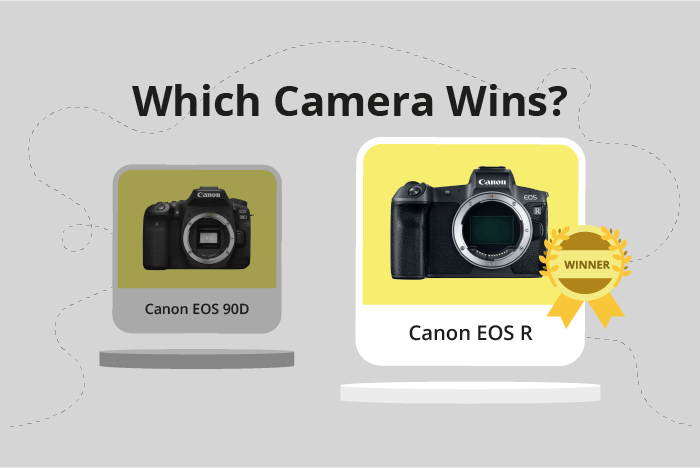Canon EOS 90D vs EOS R Comparison
Canon EOS 90D

Canon EOS R

The Canon EOS R outperforms the Canon EOS 90D with a score of 74/100 compared to 67/100. Both cameras share similarities in their announcement dates and release years, with the EOS R launching in 2018 and the EOS 90D in 2019. The EOS R is a mirrorless camera, while the 90D is a DSLR.
The EOS R excels with its smaller size (136 x 98 x 84mm) and lighter weight (485g) compared to the 90D’s measurements (141 x 105 x 77mm) and weight (701g). This makes the EOS R more portable and convenient for users. However, the EOS 90D has a lower launch price of $1199, making it more budget-friendly than the EOS R’s $2300 price tag.
Considering these factors, the Canon EOS R is a better camera due to its compact size and lighter weight. The EOS 90D, though, offers a more affordable option for those prioritizing price.
Canon EOS 90D vs EOS R Overview and Optics
The Canon EOS R outperforms the Canon EOS 90D in optics with a score of 73/100, while the 90D scores 62/100. Both cameras share some common specifications, such as the CMOS sensor type, Digic 8 processor, and the absence of image stabilisation.
The EOS R has an edge over the 90D due to its full-frame sensor size and superior DXOMARK sensor score of 89, as opposed to the 90D’s APS-C sensor and DXOMARK score of 58. The full-frame sensor allows the EOS R to capture more light and produce better image quality, especially in low-light conditions. Additionally, the EOS R features the Canon RF lens mount, which offers a wider range of lenses with improved optical performance.
On the other hand, the EOS 90D has a higher megapixel count of 33, compared to the EOS R’s 30.3 megapixels. This advantage enables the 90D to capture more detail in images. Furthermore, the 90D has a faster shooting speed of 10 frames per second, while the EOS R has a shooting speed of 8 frames per second. This makes the 90D more suitable for action photography, where capturing fast-moving subjects is crucial.
The lens mount of the EOS 90D, Canon EF/EF-S, also has a vast selection of lenses available, which may be an advantage for photographers who already own Canon EF/EF-S lenses or prefer the selection available in this mount.
In terms of optics, the Canon EOS R is the superior choice due to its full-frame sensor, higher DXOMARK score, and advanced lens mount. However, the EOS 90D may be a better fit for those who prioritize higher resolution and faster shooting speed, or prefer the selection of lenses available in the Canon EF/EF-S mount.
Canon EOS 90D vs EOS R Video Performance
The Canon EOS 90D outperforms the Canon EOS R in video capabilities, scoring 91 out of 100, while the EOS R scores 70. Both cameras share some common specifications, such as 4K max video resolution and 3840 x 2160 max video dimensions. Additionally, they both have built-in time-lapse functionality.
The EOS 90D excels with its higher max video frame rate of 120fps, which is significantly better than the EOS R’s 30fps. This higher frame rate allows for smoother and more detailed slow-motion footage, giving the EOS 90D an advantage for videographers who require such features.
The EOS R, on the other hand, does not have a significant advantage in terms of video capabilities compared to the EOS 90D. Its lower frame rate puts it at a disadvantage, and it does not offer any standout features in this category that would make up for this shortcoming.
In terms of video capabilities, the Canon EOS 90D is the clear winner due to its higher frame rate. This makes it an excellent choice for those who prioritize video performance in their camera selection. Conversely, the Canon EOS R falls short in this aspect, and potential buyers should consider this when deciding between the two models.
Canon EOS 90D vs EOS R Features and Benefits
The Canon EOS R emerges as the winner in this comparison with a feature score of 87 out of 100, while the Canon EOS 90D scores 83 out of 100. Both cameras share several specifications, including touchscreen capabilities, flip screens, WIFI, and Bluetooth connectivity. Neither camera has GPS functionality.
The EOS R’s superior features are evident in its larger screen size and higher screen resolution. With a 3.2-inch screen and a resolution of 2,100,000 dots, the EOS R provides a clearer and more detailed view than the 90D’s 3-inch screen and 1,040,000-dot resolution. This advantage allows for better image preview and easier menu navigation on the EOS R.
The EOS 90D, however, holds its own with a slightly lower score. It still offers an excellent set of features, making it a strong contender in the market. While it may not surpass the EOS R in screen size and resolution, it remains a reliable and user-friendly option for photographers and videographers alike.
Considering the differences in feature scores and specifications, the Canon EOS R proves to be the better camera due to its larger screen and higher resolution. This advantage enhances the user experience, making it a suitable choice for professionals and enthusiasts seeking a high-quality camera with impressive features. The Canon EOS 90D, while not as advanced as the EOS R, remains a solid choice for those who prioritize other aspects of a camera, such as price or specific performance needs.
Canon EOS 90D vs EOS R Storage and Battery
The Canon EOS 90D outperforms the Canon EOS R in storage and battery with a score of 48/100, while the EOS R scores 35/100. Both cameras share common specifications, such as having one memory card slot, and accepting SD, SDHC, and SDXC (UHS-II compatible) memory cards. Additionally, both cameras use the LP-E6N battery type.
The EOS 90D surpasses the EOS R in battery life, providing 1300 shots per charge compared to the EOS R’s 370 shots. This difference allows the EOS 90D users to take more photos without needing to recharge or replace the battery. However, the EOS R has the advantage of USB charging, enabling users to charge the camera using portable power banks or other USB power sources.
Considering the storage and battery aspects, the Canon EOS 90D is the better choice for extended shooting sessions due to its longer battery life. Although the Canon EOS R offers USB charging, it falls short in battery life, making it less suitable for prolonged use without access to a charging source.
Canon EOS 90D vs EOS R – Our Verdict
Are you still undecided about which camera is right for you? Have a look at these popular comparisons that feature the Canon EOS 90D or the Canon EOS R:

